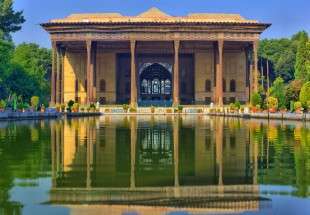A new study by Iranian researches Mohamad Ebrahim Zare’i and Zohreh Soltanmoradi has detailed the water supply system in Iranian architecture masterpiece, Chehel Sotoun.
25 Nov 2024
- UNRWA says only 6% of Gaza's food needs are being met
- Hamas says stopping Israeli war is ‘top priority’
- World Assembly of Islamic Awakening Condemns Terrorist Attack in Pakistan
- France to apply international law regarding ICC arrest warrant for Netanyahu
- Iranians donate to war-stricken people in Gaza, Lebanon (photo)
- ICC arrest warrant for Netanyahu, a step towards justice for Palestinians
- Leader receives members of Basij volunteer forces (photo)
- Activists in Paris rally in support of Palestinian women in Gaza (video)
- Death sentence for Netanyahu, Israeli official must be issued
- Huj. Shahriari meets Turkish ambassador to Tehran (photo)









